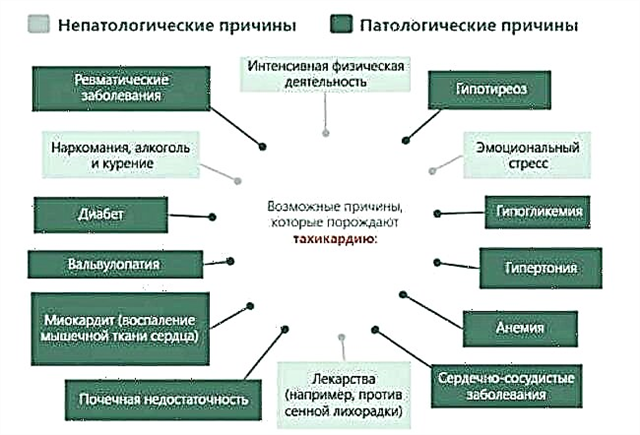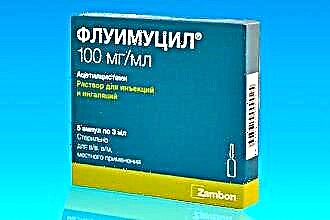The difficulty in diagnosing respiratory diseases in infants lies in the fact that a sick child cannot yet complain to his parents about feeling unwell and explain what exactly worries him. A red throat in a baby is one of the clear signs of an illness, indicating a possible cause of anxiety - a sore throat. However, it is worth remembering that "red throat" is not yet a diagnosis, but just a symptom characteristic of many diseases, both infectious and allergic.
We will tell you how to understand that a baby has a sore throat, as well as discuss the reasons why babies may have a red and sore throat.
How to understand that a baby has a sore throat
 A red throat should be alarming only if, in parallel, other signs of the disease are found in the child - anxiety, fever, vomiting, etc.
A red throat should be alarming only if, in parallel, other signs of the disease are found in the child - anxiety, fever, vomiting, etc.
Symptoms to watch out for:
- Refusal to feed. If the baby willingly breastfeeds, but almost immediately stops eating and cries, it is obvious that it hurts him to swallow. Sore throat when swallowing is characteristic of tonsillitis (inflammation of the tonsils).
- Coughing, change in voice, wheezing indicate inflammation in the pharynx, larynx or trachea.
- Enlargement of the lymph nodes located under the lower jaw. If, when feeling them, the child resists and cries, it is obvious that this causes pain in him - this is another symptom of the disease. The enlargement and soreness of the lymph nodes is characteristic of angina, diphtheria, infectious mononucleosis and other diseases.
- Crying for no reason can also be the result of a sore throat.
- The presence of plaque on the tonsils or the visible part of the pharynx. It can be mucopurulent, white, yellowish-white, gray, in the form of dots, spots or a film.
- Fever. Red throat and high fever in infants are classic symptoms of respiratory diseases such as tonsillitis and pharyngitis.
- Indigestion. Diarrhea or vomiting, accompanied by a runny nose and redness of the throat, are characteristic symptoms of an enterovirus infection. In addition, indigestion in newborns and babies can develop as a result of an increase in body temperature.
If you notice any suspicious symptoms in your child, see your pediatrician. Do not try to diagnose yourself - it is quite possible that some signs of the disease eluded you.
Possible causes of a red throat
Sore throat accompanies many diseases that affect both children and adults. At the same time, there are throat diseases, which are mainly susceptible to children, and diseases that practically do not occur in infancy. Let's take a closer look at the reasons why babies may have a sore throat.
Diseases that are characterized by pain and redness of the throat:
- Acute respiratory viral infection, i.e. ARVI. In addition to redness of the throat, with ARVI, a runny nose, sneezing, fever, conjunctivitis can be observed.
- Pharyngitis is an inflammation of the pharyngeal mucosa. It is worth noting that infants rarely develop isolated inflammation of the pharynx - usually the nasopharynx is drawn into the process (in this case, rhinopharyngitis is diagnosed) or the larynx (laryngopharyngitis).
- Tonsillitis is an inflammation of the tonsils. Acute bacterial tonsillitis is called angina. Its characteristic signs are an increase in the tonsils, pain when swallowing, the formation of plaque on the tonsils. In children under 3 years of age, angina practically does not occur, since the lymphadenoid tissue at this age is not sufficiently developed.
- Fungal tonsillitis is a special type of tonsillitis that is caused by Candida fungi. Parents may notice an abundant cheesy bloom and redness in the baby's throat. The general state of health of the patient is not disturbed.
- Infectious mononucleosis is an infectious disease that affects mainly children under 7 years of age. Its symptoms are redness and swelling of the tonsils, swollen lymph nodes throughout the body, weakness, and fever.
- Children's infections - diphtheria, scarlet fever, measles and some others - often in the early stages do not have any manifestations, except for increased body temperature and redness of the throat. Children's infections are very contagious, their local outbreaks are often observed in kindergartens and schools. The risk of developing childhood infections is significantly reduced after being vaccinated.
- The period of teething can also be accompanied by swelling and redness of the soft tissues of the oropharynx. You can use gum gels to reduce discomfort.
- Hyperemia of the oropharyngeal vessels can also be a manifestation of an allergic reaction to food or drugs, less often to hygiene products.
Viral throat diseases
SARS is the most common cause of sore throat and redness. SARS viruses can cause tonsillitis, pharyngitis, laryngitis and other respiratory diseases.
SARS is often called the common cold - indeed, epidemics of viral infections usually develop in the cold season, when people are more likely to be hypothermic.
SARS in children under 3 years of age develop relatively rarely, especially if the child is breastfed (antibodies to viruses are transmitted with mother's milk). However, a baby can get SARS from adults and other children. The risk of developing the disease increases in certain conditions:
- when switching to artificial feeding (stress for the body, moreover, the supply of maternal antibodies stops);
- if the child rarely walks in the fresh air (this does not allow the immune system to develop, creates favorable conditions for the development of upper respiratory tract infections);
- hypothermia of a child is a typical cause of ARVI;
- clothes that are not suitable for the weather, both too light and too warm - if a child sweats, the risk of hypothermia increases significantly;
- if someone in the family is sick.
An important feature of ARVI in children is the simultaneous damage to several parts of the respiratory tract. Simultaneously with sore throat, a runny nose, cough, etc. develop.
The body of children, unlike adults, almost always reacts to ARVI with a sharp increase in body temperature. With a cold, the child's body temperature usually exceeds 38 C.
Throat treatment in infants
 Treatment of children under 3 years old requires a special approach, even when it comes to a banal sore throat. Most of the drugs actively used to treat pharyngitis and tonsillitis in adults are not suitable for infants. In addition, there are restrictions on treatment procedures. Babies cannot gargle or suck lozenges and tablets. It is also forbidden to use drugs in the form of aerosols and sprays - if a sprayed drug gets into the respiratory tract under high pressure, it can lead to laryngospasm.
Treatment of children under 3 years old requires a special approach, even when it comes to a banal sore throat. Most of the drugs actively used to treat pharyngitis and tonsillitis in adults are not suitable for infants. In addition, there are restrictions on treatment procedures. Babies cannot gargle or suck lozenges and tablets. It is also forbidden to use drugs in the form of aerosols and sprays - if a sprayed drug gets into the respiratory tract under high pressure, it can lead to laryngospasm.
The selection of medicines for an infant, especially a newborn, is carried out by a pediatrician. He also calculates the dosage of drugs.
Some medicines can be taken at an early age in small doses. For example, some throat sprays can be used 1 or 2 times a day, not by watering the throat, but by applying the product to the inside of the baby's cheek.
Spray "Aqualor throat" is suitable for children from 6 months and older. It contains purified seawater as well as chamomile and aloe vera extracts. The spray has a local anti-inflammatory and antiseptic effect. In parallel, it is recommended to bury the nose with drops - this makes breathing easier and helps to cleanse the pharynx of mucus.Such preparations as "Aqualor Baby", "Nazol Baby" contain sea water as an active ingredient. As it flows down the nasopharynx, it travels down the throat, reducing signs of inflammation. If the nose is blocked, vasoconstrictor drops, such as Vibrocil, will help. For children under 3 years old, "Vibrocil" is produced in the form of drops, and for children from 3 years old - in the form of a nasal spray.
Very often in childhood, pharyngitis and tonsillitis are accompanied by fever. The body needs a high temperature to implement an effective immune response, so you should not lower it at the slightest increase in performance. However, the temperature should be constantly monitored, since its level above 39C can cause significant harm to health.
It is recommended to bring down the temperature when reaching 38.5 C. As an antipyretic agent, you can use "Paracetamol for children", "Panadol", "Ibuprofen", "Efferalgan". All these drugs are produced in a form convenient for children - in the form of a syrup, suspension or rectal suppositories.
When calculating the dosage of antipyretic for children, it is important to take into account not only the age, but also the weight of the patient. Read the instructions carefully before using antipyretics.
When do you need a doctor's help?
 Sometimes serious illnesses such as diphtheria, scarlet fever, infectious mononucleosis and others are hidden behind the symptoms of a cold sore throat. Carefully monitor the well-being of the sick child, monitor temperature indicators, the nature of feces, the condition of the skin and mucous membranes. Do not leave him unattended.
Sometimes serious illnesses such as diphtheria, scarlet fever, infectious mononucleosis and others are hidden behind the symptoms of a cold sore throat. Carefully monitor the well-being of the sick child, monitor temperature indicators, the nature of feces, the condition of the skin and mucous membranes. Do not leave him unattended.
Call a doctor immediately if a baby with a sore throat has:
- severe vomiting or diarrhea;
- body temperature above 39 C;
- body temperature above 38.5 C, which is not confused by paracetamol and other antipyretic drugs allowed for infants;
- signs of dehydration - dry mouth, no tears when crying, sunken eyes and fontanelle (dehydration can occur with angina if the child refuses to feed for a long time);
- difficulty breathing or noisy breathing, wheezing, etc.;
- rash on the body.



